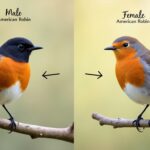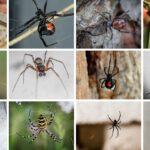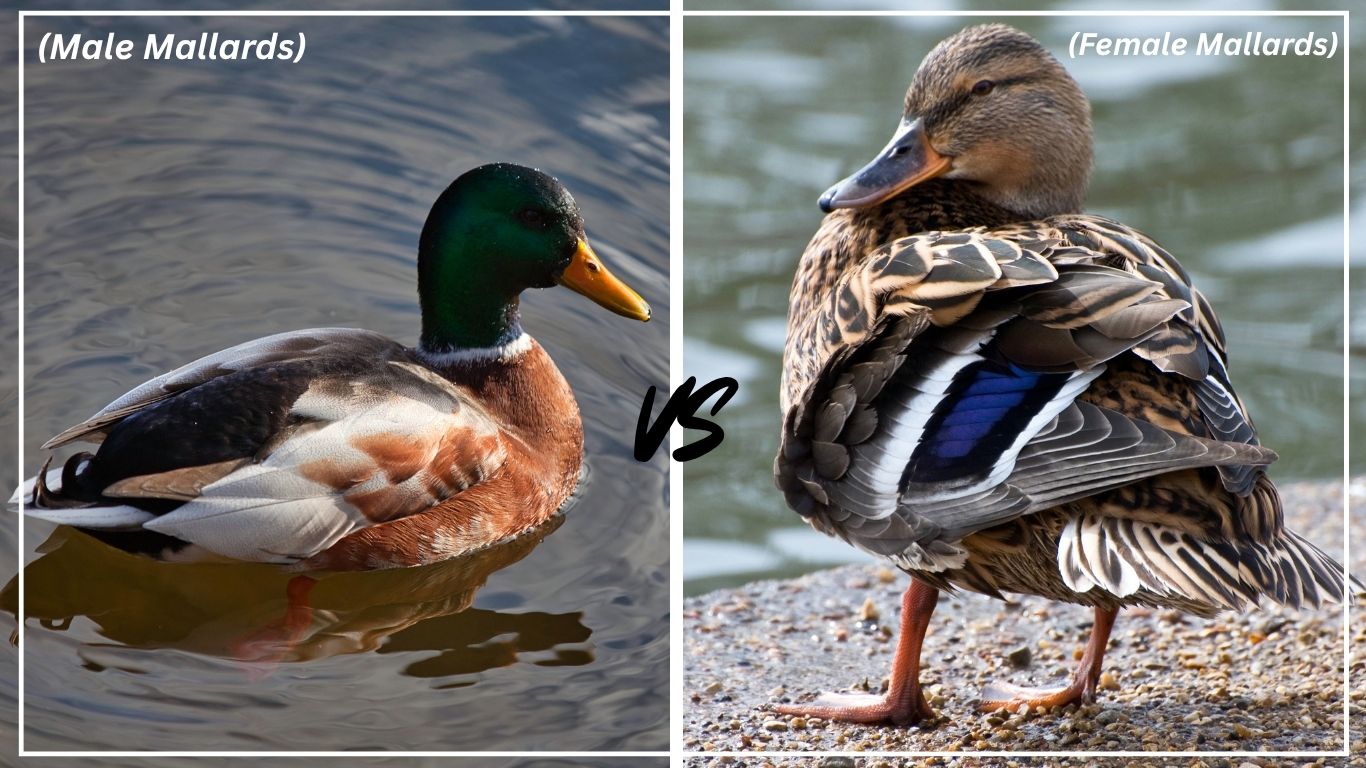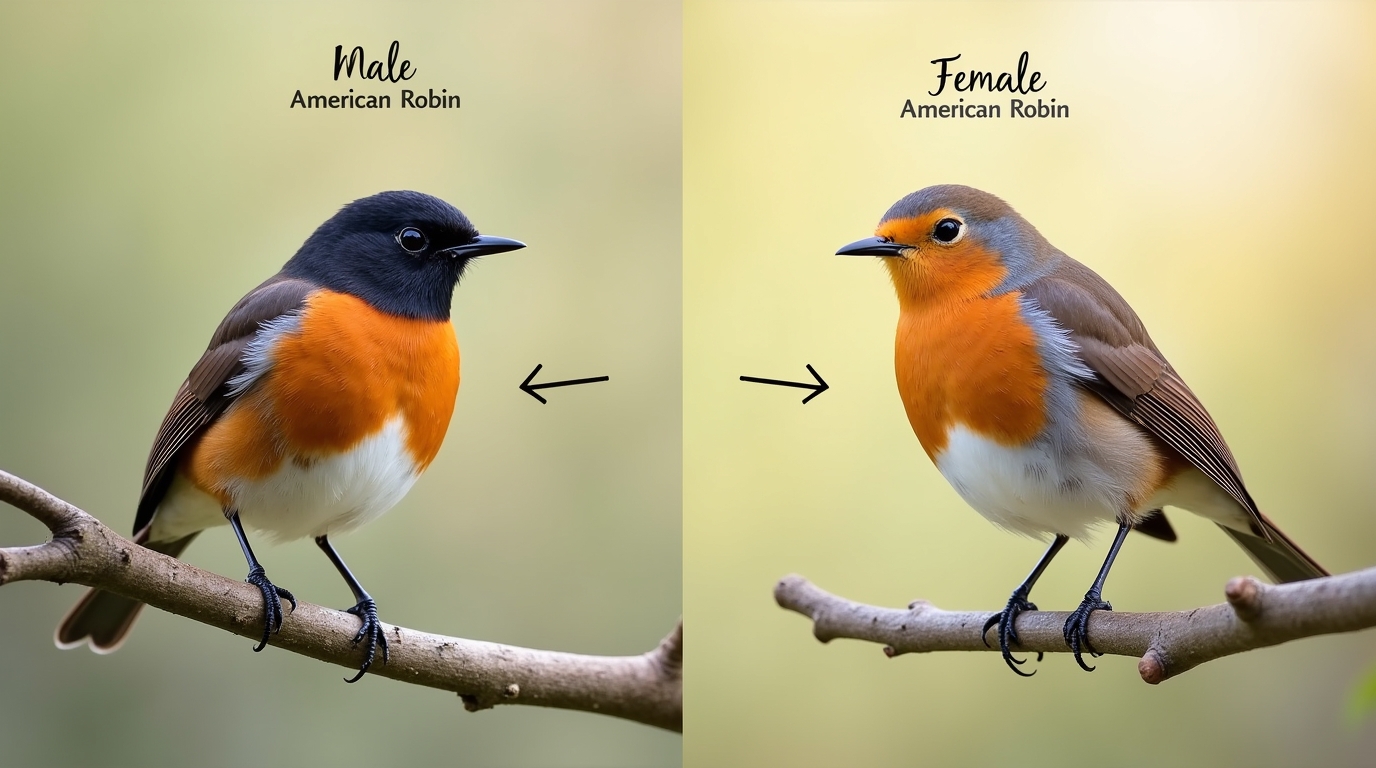Mallard ducks are one of the most familiar and widely recognized waterfowl in the world. But if you’ve ever taken a closer look at a group of them, you might notice that not all mallards look or behave the same. That’s because male and female mallards have distinct differences in their appearance, behavior, roles in parenting, and even the sounds they make. In this guide, we’ll break down the key differences between female and male mallards to help you tell them apart more easily—whether you’re a birdwatcher, nature lover, or just curious.
Physical Appearance
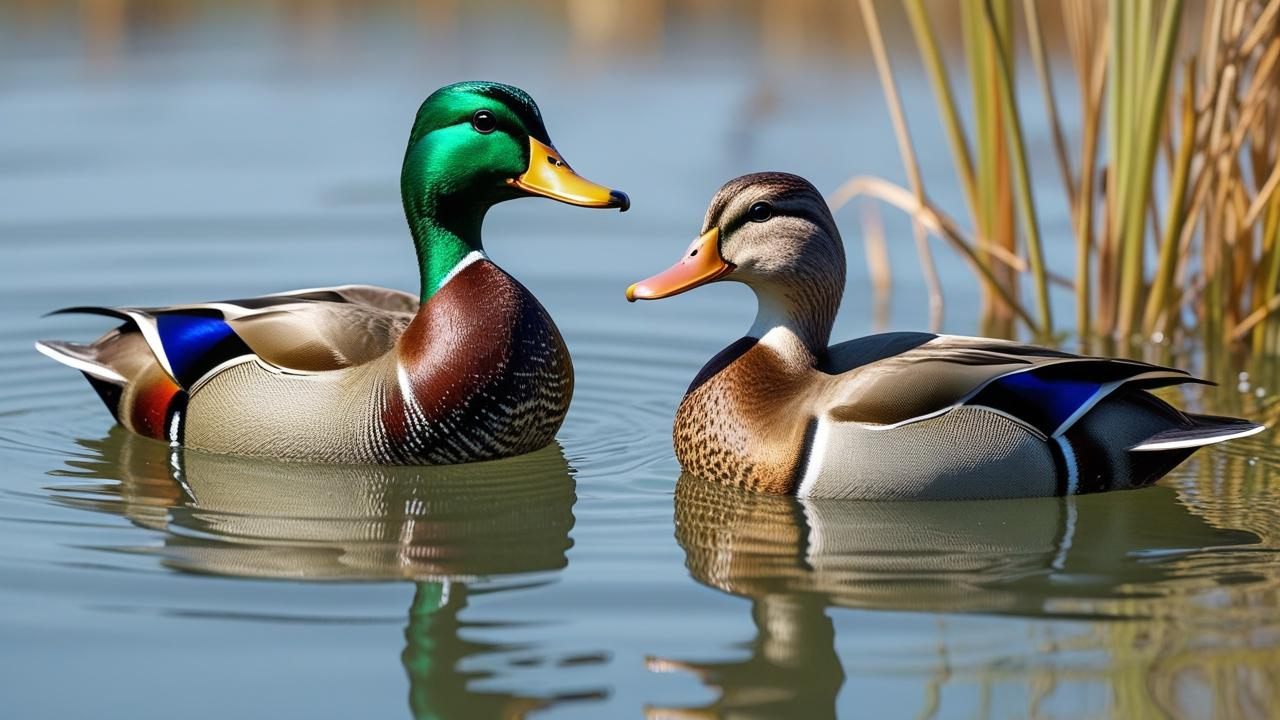
While both male and female mallards share the same species, their looks are quite different—especially during the breeding season. These visual differences play important roles in survival and reproduction.
Plumage Color
Males: Iridescent green head, white ring around the neck, chestnut-brown chest, and grayish body. Their bright colors help attract females.
Females: Covered in mottled brown feathers all over, helping them blend into their surroundings, especially while nesting.
Bill Color
Males: Typically have a solid yellow or greenish-yellow bill.
Females: Have an orange bill with black or brown blotchy markings.
Size and Body Shape
- Males are generally slightly larger, with a bulkier body and longer tail feathers.
- Females appear slimmer and slightly smaller overall.
Behavior Differences
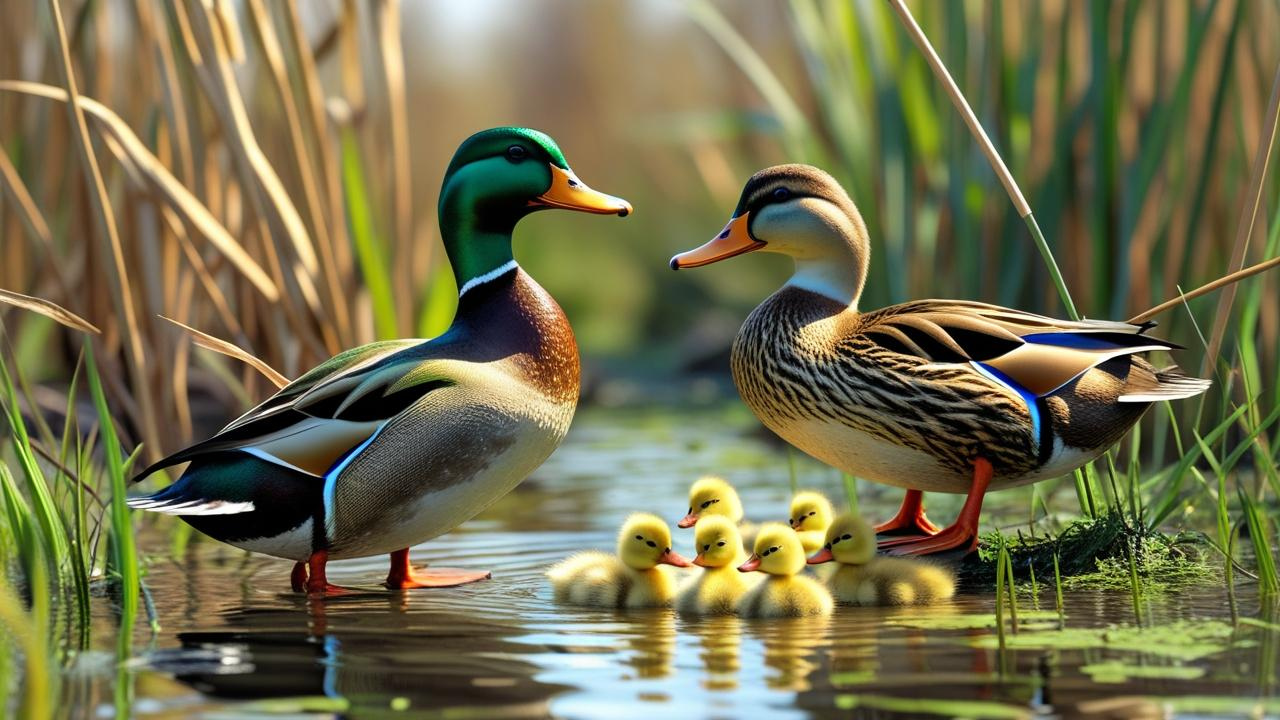
Male and female mallards not only look different, but they also behave differently—especially during the breeding season. These behavioral traits are essential for mating, nesting, and protecting offspring.
Courtship Displays
- Males are very active during mating season, performing elaborate courtship displays to attract a mate. These include head bobbing, tail shaking, wing flapping, and even short flights around the female.
- Their bright plumage and energetic movements help them stand out among competitors.
Nesting Role
Females take full responsibility for nest building and incubation. They select a hidden spot near water or in tall grass, line it with down feathers, and lay about 8–13 eggs. After laying, the female incubates the eggs for nearly a month, rarely leaving the nest except to feed quickly.
Aggression and Territory
- Males may become more aggressive toward rivals during courtship, chasing off other males to secure a female.
- Females, on the other hand, are more protective than aggressive. Once nesting begins, they guard the area fiercely and avoid exposing their location to predators.
Vocalizations and Sounds

The sounds mallards make are another easy way to tell the difference between females and males. Their vocalizations serve different purposes and vary noticeably in tone and volume.
Female Quack
- The classic loud “quack” most people associate with ducks comes from the female mallard.
- She uses it to communicate with ducklings, call her mate, or express distress.
- Her voice is strong and carries well over distance, especially in open water or grassy fields.
Male Sounds
- Males do not quack like females.
- Instead, they make softer, raspier sounds such as a low “rhaeb” or “kwek-kwek.”
- These sounds are typically used during courtship or while following a female, and they’re much quieter than the female’s call.
Role in Mating and Parenting
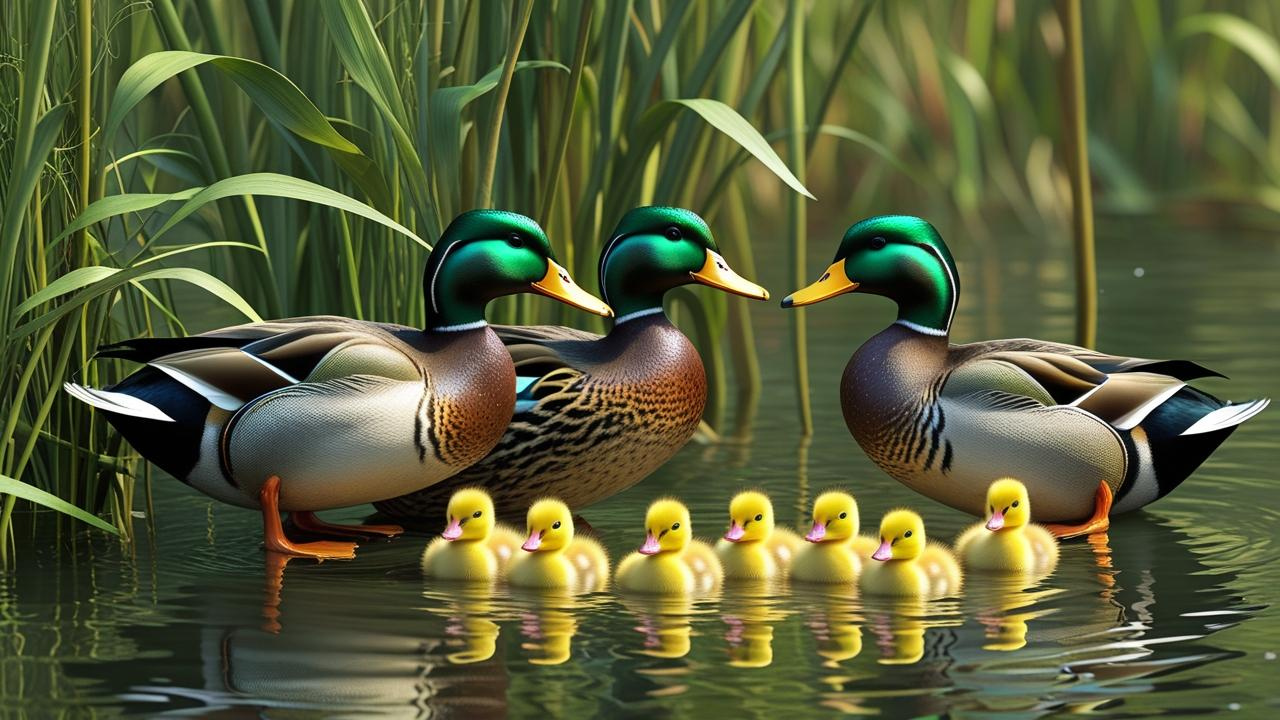
Male and female mallards have very different responsibilities when it comes to reproduction and raising young. These roles are shaped by instinct and survival strategies.
Mating Behavior
- During breeding season, males compete for the attention of females by displaying their colorful feathers and performing courtship rituals.
- Once a pair forms, the male usually stays with the female only until she lays her eggs.
- After that, males typically leave and may seek out other mates or stay nearby in flocks.
Parenting Duties
Females take full charge of parenting. They incubate the eggs for about 26–30 days, keeping them warm and protected.After hatching, the ducklings follow the mother closely. She leads them to water, teaches them to forage, and defends them from predators.
Males play no role in raising the ducklings and often move on to molt or gather in non-breeding groups.
Seasonal Changes
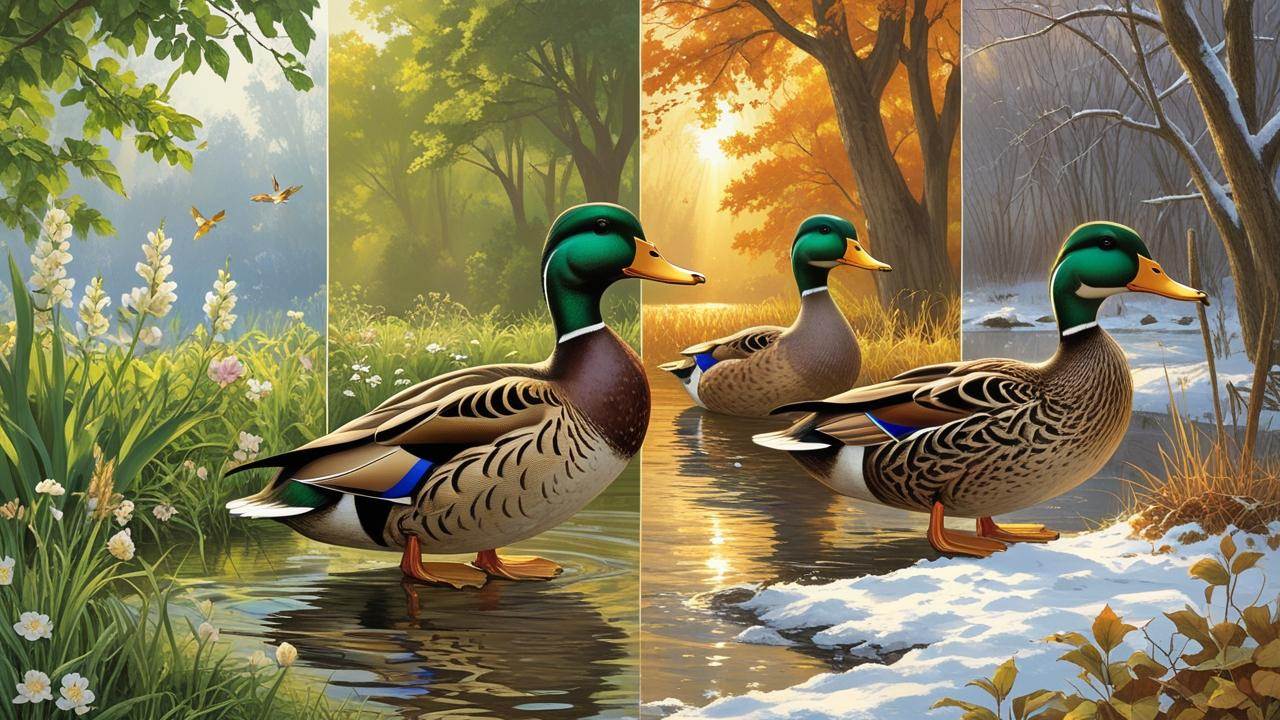
While female mallards remain mostly the same in appearance year-round, male mallards undergo noticeable seasonal changes—especially after the breeding season.
Eclipse Plumage in Males
After mating season ends, male mallards molt and enter a phase known as eclipse plumage. During this time, they lose their bright, colorful feathers and grow brown, dull plumage that looks very similar to females. This camouflage helps protect them from predators while they are flightless during molting.
The eclipse phase typically lasts for several weeks in summer, after which males regain their vibrant feathers before the next mating season.
Habitat Use and Feeding
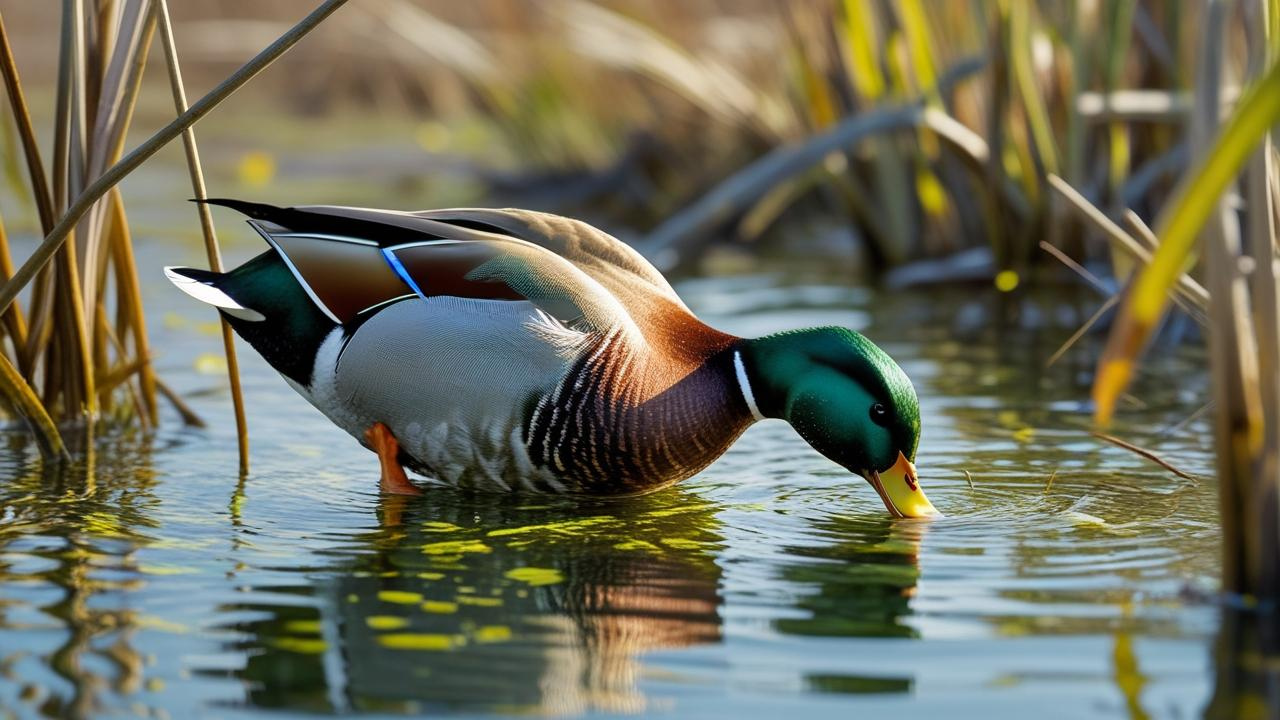
Male and female mallards share the same environments and diet, but their behavior within these spaces can differ, especially during the nesting season.
Foraging Behavior
- Both sexes are dabbling ducks, meaning they feed by tipping forward in the water to reach plants, seeds, and small aquatic creatures.
- Males tend to forage more freely in open areas.
- Females, especially when nesting or caring for ducklings, may stay closer to cover to avoid predators.
Protective Instincts
- Females are highly cautious and protective, especially once they have chosen a nesting site.
- They often avoid risky areas and may act injured (the “broken wing” display) to lure predators away from the nest.
- Males, with no parenting role, are less concerned with stealth or protection once mating season is over.
Why These Differences Matter
The distinct traits between female and male mallards are not just for show—they serve important purposes for survival, reproduction, and the overall balance within their habitats.
Camouflage and Survival
One of the most critical differences is in feather coloration. Female mallards are brown and speckled, which helps them remain hidden from predators, especially when nesting. This camouflage increases the chances of successfully raising their ducklings. In contrast, males have bright colors to attract mates, not to hide. Their role ends after mating, so camouflage isn’t essential for them.
Mate Selection
The bright plumage, courtship behaviors, and vocalizations of the male mallard are designed to appeal to the female. During mating season, females observe many potential mates and choose the healthiest, most vibrant male. This selection process strengthens the gene pool and helps ensure strong, healthy offspring. Males that can’t impress a female simply don’t pass on their genes.
Parental Investment
Female mallards take on the full burden of raising the young. Because of this, their physical and behavioral traits are fine-tuned for protection, endurance, and nurturing. Males, on the other hand, are built for short-term mating success rather than long-term care, which reflects a common pattern in many duck species.
Female vs Male Mallards
Understanding the differences between female and male mallards becomes easier when you look at their traits side by side. From physical appearance to vocal behavior and parental roles, this summary highlights how each sex functions differently in the wild.
| Feature | Male Mallard | Female Mallard |
| Plumage | Bright green head, colorful body | Mottled brown all over |
| Bill Color | Yellow or greenish-yellow | Orange with dark blotches |
| Voice | Soft, raspy sounds | Loud classic “quack” |
| Role in Nesting | No role after mating | Builds nest, incubates, raises young |
| Size | Slightly larger and bulkier | Slightly smaller and sleeker |
| Seasonal Change | Molts into eclipse plumage | Stays brown year-round |
FAQs
Can female mallards have green heads?
No, female mallards never have green heads. Only the males display the signature iridescent green during the breeding season. Females always maintain their brown coloring for camouflage.
How can you tell a male and female mallard apart from a distance?
From afar, males are easily identified by their shiny green heads and gray bodies, while females appear uniformly brown. During summer molt, however, males may resemble females, making it harder to distinguish them.
Do mallards form lifelong pairs?
Mallards typically form seasonal pair bonds that last through the breeding period. After mating, males often leave, and the bond does not continue into the next season.
Are female mallards more aggressive while nesting?
Yes, female mallards become highly defensive of their nests. While not typically aggressive birds, they may hiss, flap, or feign injury to distract or warn off threats.
When do male mallards lose their bright feathers?
Male mallards lose their colorful feathers in late spring or early summer after the breeding season. They enter eclipse plumage, resembling females, until their bright feathers regrow in late summer or early fall.

